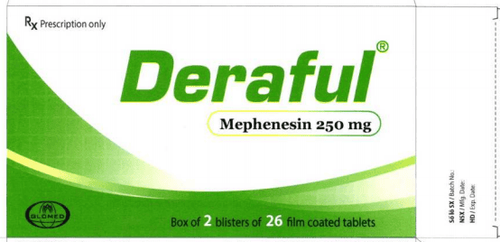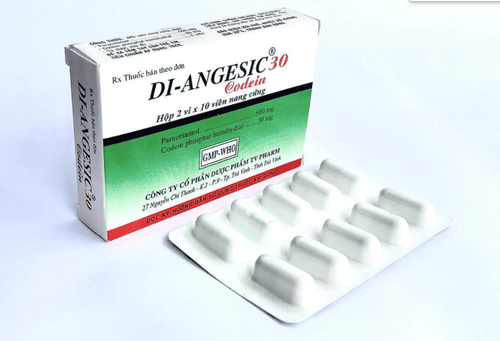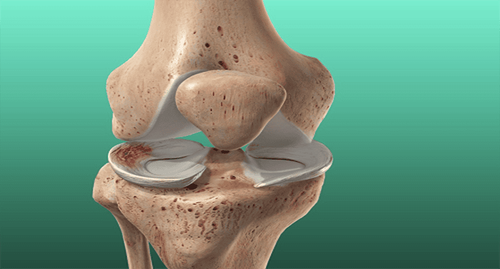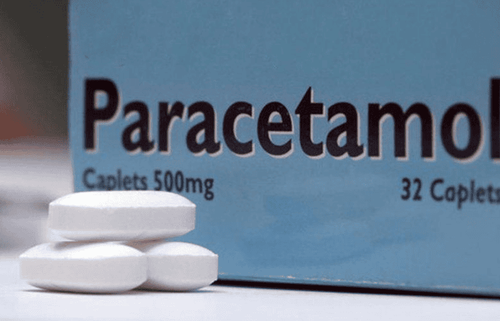This is an automatically translated article.
Muscle pain is a common problem arising in the process of living and working. Most muscle aches can go away on their own after a few days, however, some cases of prolonged pain or pain due to certain musculoskeletal conditions require medication to help relieve pain and improve quality. quantity of life.
The use of pain relievers in people with myalgia is very frequent. But sometimes the use of drugs without understanding the medicine makes us use it incorrectly or do not know how to use it most effectively. In addition, all drugs have certain side effects, so it is important to use them correctly to avoid abuse of drugs that affect the body.
Muscle pain can be caused by the main causes due to excessive muscle activity causing muscle tension, muscle injury, some musculoskeletal diseases such as osteoarthritis, arthritis, myositis.... In addition, stress factors will increase muscle soreness by increasing sensitivity to pain. If after using non-pharmacological measures such as rest, warm or cool compress, there is no improvement, you may need to take pain relievers. Medicines for muscle pain are divided into two main groups, including pain relievers and muscle relaxants. Below are the effects of two main groups of drugs used in the treatment of muscle pain.
1. Painkillers
Paracetamol Paracetamol (acetaminophen) is the most commonly used pain reliever and fever reducer today. It is used for mild to moderate pain.
Paracetamol has analgesic effects by both peripheral and central mechanisms, but the mechanism is not really clear. Some hypothesize that paracetamol works by blocking the enzyme COX (cyclooxygenase) on the central nervous system including the brain and spinal cord, preventing the production of chemical mediators of pain. However, it has no anti-inflammatory effect, so it is not recommended for pain caused by inflammation.
Dosage: 10-15mg/kg body weight, at least 4-6 hours apart if pain is still present. For adults, not more than 3g/day and children not more than 80mg/kg/day.
Side effects: Causes symptoms such as nausea, vomiting, loss of appetite and abdominal pain when overdosed, long-term and continuous damage to the liver causing increased liver enzymes, acute liver failure. Should be used with caution when used for people with impaired liver function, malnutrition, pregnant women.
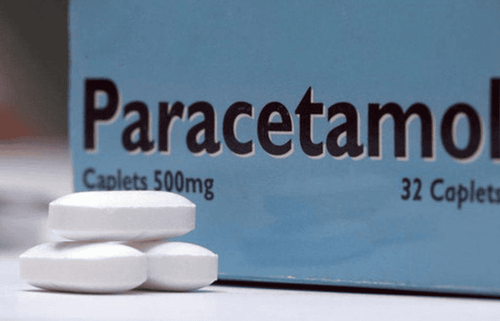
Paracetamol (acetaminophen) là một trong các thuốc chữa đau cơ
Nonsteroidal anti-inflammatory drugs (NSAIDs) This class of drugs works by inhibiting the action of the enzyme cyclooxygenase (COX), which prevents the production of prostaglandins. During the inflammatory response, prostaglandins can act on the hypothalamus, resulting in elevated temperature and pain sensation. Therefore, the fact that non-steroidal anti-inflammatory drugs (NSAIDs) inhibit the action of the COX enzyme will reduce the production of prostaglandins, causing the body temperature to decrease, so it has the effect of reducing fever and preventing inflammation and pain.
There are two types of enzymes, COX-1 and COX-2. Although COX-1 is present in most tissues, COX-2 is only present in the inflammatory response. Therefore, this group of drugs is divided into a group of drugs that act non-selectively and drugs that act selectively on cox-2.
Some NSAID anti-inflammatory pain relievers include: ibuprofen, diclofenac, meloxicam, naproxen, celecoxib...
Due to their COX inhibitory properties, this group of drugs causes effects on other organs causing a Some side effects such as increased risk of peptic ulcer, gastric perforation complications, gastrointestinal bleeding, sensitivity to light, bronchospasm, dizziness... Should be careful when using these products. patients with a history of gastric or duodenal disease.
Opioid analgesics This is a narcotic pain reliever with strong analgesic effect. The drug works to reduce pain caused by resistance and block incoming pain signals and alter pain perception. The inhibitory effect on the pain center makes the patient feel pain-free, which means it doesn't actually relieve the pain, but has the effect of altering the brain's perception of pain.
Moderately effective pain relievers such as codeine and tramadol are prescribed when there is severe pain that drugs such as paracetamol or NSAIDs do not work. And strong opioid pain relievers are used in severe pain, often used in cancer patients, pain caused by surgery, severe trauma...
Drugs are used under the direction of medical staff and are prescribed by doctors. controlled like any other drug. Patients should not arbitrarily use without the consent of the medical staff.
Some unwanted effects may be encountered such as causing drowsiness, dizziness, nausea, respiratory failure, constipation, euphoria...
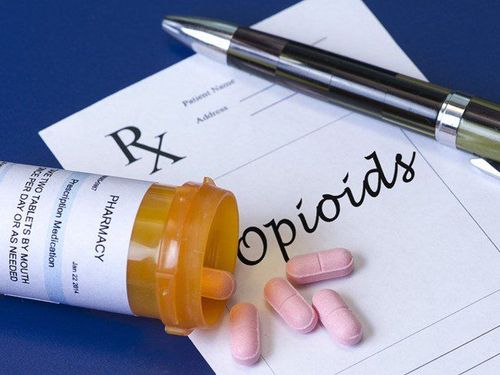
Thuốc trị đau nhức cơ bắp nhóm opioid có tính giảm đau mạnh
2. Muscle relaxants
Muscle relaxants are often used along with pain relievers to reduce muscle tension that causes pain. They are used in cases of muscle pain and associated muscle spasticity. These drugs have selective inhibitory effects on neurons that control muscle tone in the central nervous system, thereby reducing muscle tone and relaxing skeletal muscle.
Some drugs have muscle relaxant effects including: mydocalm, myonal, decontractyl...
Drugs can cause side effects such as muscle weakness, headache, low blood pressure, feeling of nausea, vomiting, abdominal pain ...
The above is the effect of drugs for muscle pain, when used properly, can bring high efficiency and avoid unwanted effects. But overuse and too often leads to the risk of dangerous side effects and complications. When using over-the-counter pain relievers that don't work, you should go to a doctor's office for proper examination and treatment.
Please dial HOTLINE for more information or register for an appointment HERE. Download MyVinmec app to make appointments faster and to manage your bookings easily.





